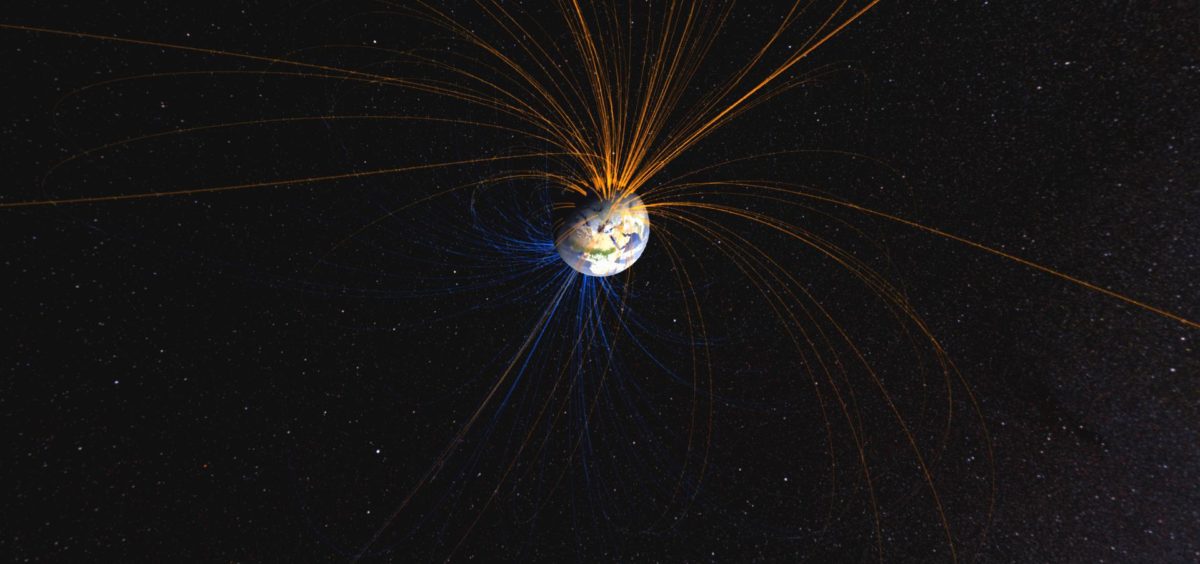One of the Kenya-based researchers who has claimed the Earth’s magnetic field can affect solar panel performance has spoken to pv magazine about using stainless steel cages as a mitigation measure.
David Wafula Wekesa, from the Renewable Energy Research Consortium at the Multimedia University of Kenya said barriers such as those used around mobile phones could provide a solution to the interference of the geomagnetic field. “Bigger cages are not available in the market,” said Wekesa, “but the technology of magnetic shielding has been there for decades.”

Image: Multimedia University of Kenya
Wekesa and his colleagues replaced conventional aluminum frames used on crystalline silicon solar panels with a 1,980 x 960 x 50mm steel cage. “Magnetically dominant incident waves have low impedance and higher conductivity so they are best countered by absorption/suppression of radiation with materials with lower conductivity, such as high permeability steel or stainless-steel shielding cages,” the scientist said.
When asked about the costs of a similar shield, Wekesa said these are currently difficult to calculate, due to the varying module sizes and absence of data on the quantity of steel required per square meter of shielding cage. “However, we recommend for further studies on the quantity and purity of steel needed for perfect shielding per unit surface area to inform the cost,” he further explained.
Mapping
Latitude, longitude and altitude are required to calculate magnetic field strength and models have attempted to represent geomagnetism. “When describing the magnetic field of the Earth, we must specify both the direction and the intensity of the field,” said the academic. “Since these components change differently in different places, it is not easy to say how the field of the Earth as a whole is changing.”
The academic said producing a global map to indicate optimal project locations is not as simple a task as it may sound. “The earth is not a perfect sphere, therefore it is wrong to assume that regions existing along the same latitude will experience same magnetic field,” said Wekesa. “The change in magnetic field is unpredictable since it depends on the earth’s liquid-iron outer core, called the ‘core field’; [which is] increasing in some regions and decreasing in others, thus a need to revise the parameters of the magnetic field after every five years.”
He also explained that the geomagnetic field has a range of 23000 to 67000 nano-Tesla (nT) and increases as one approaches the magnetic poles. “The strength of the bar magnet grows stronger as you approach the poles, similar to the earth’s field,” Wekesa stated. “It is stronger at the geomagnetic poles as compared to the equator which happens to be the midpoint of the bar magnet.” Therefore, according to the researcher, PV modules located near the geomagnetic poles will be affected more.
Change
The geomagnetic field must be measured at several places in Europe, North America, South America, Asia and Africa to get a good picture of its distribution and although models can predict a constant field for a year, and even consider annual change, a significant change in the field occurs every five years.
“At most places, there has been a general decrease in the strength of geomagnetic field,” said Wekesa. “Current studies indicate that the strength of Earth’s magnetic field has been decreasing by about 10% over the past century and further research by geoscientists [is] under way on the cause for this decrease.”
In their study, the academic and his colleagues demonstrated the geomagnetic field could reduce solar panel conversion efficiency 0.21% between the equator and a 50-degree latitude. Their analysis showed the complex field can determine increases in module fill factor and falls in maximum power output.
This content is protected by copyright and may not be reused. If you want to cooperate with us and would like to reuse some of our content, please contact: editors@pv-magazine.com.




By submitting this form you agree to pv magazine using your data for the purposes of publishing your comment.
Your personal data will only be disclosed or otherwise transmitted to third parties for the purposes of spam filtering or if this is necessary for technical maintenance of the website. Any other transfer to third parties will not take place unless this is justified on the basis of applicable data protection regulations or if pv magazine is legally obliged to do so.
You may revoke this consent at any time with effect for the future, in which case your personal data will be deleted immediately. Otherwise, your data will be deleted if pv magazine has processed your request or the purpose of data storage is fulfilled.
Further information on data privacy can be found in our Data Protection Policy.